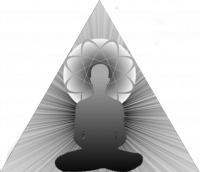
Scio-Buddhism
Faith and Philosophy Consistent with Reason and Reality
| Previous Page | Table of Contents | Next Page | 1:2 The Historical BuddhaThe founder of Buddhism was Siddhartha Gautama, born in the 5 In order to understand the context in which the core concepts of Buddhism were formulated, it is useful to know a bit about the life of the Buddha. Thus the life of the historical Siddhartha Gautama will now be explored in a reality-based way, without delving into all of the mystical mythology which typically surrounds and obscures it. Siddhartha Gautama was born in approximately the 5 Despite the generally pleasant life he had been living, he saw that there was much suffering in the world, and wanted to understand the reasons for this, as well as any possible remedy for it. He left the palace and his family seeking answers. It seems that he initially followed a path of extreme deprivation and asceticism, due to the belief that that way to overcome suffering was to learn to endure it. Over time, however, he came to see He then rejected this ascetic path, and journeyed to a place which is now called “Bodh Gaya,” where he sat and meditated under a tree which has come to be called “the bodhi tree.” During this meditation he had a special deep insight which may be called his moment of “Awakening,” “Enlightenment,” or “Illumination.” It was during this same meditation that he formulated the core concepts or principles of the “ | Previous Page | Table of Contents | Next Page | |
Please help advance Scio-Buddhism by commenting:
We welcome all comments, positive and negative, about our work and our website. We are particularly interested in any errors you find, whether these be simple typographical errors, or errors in facts or logic. If reporting an error, please be as specific as possible in identifying it, so that we will be able to properly identify and assess it. You may leave a publicly visible comment below, or in our forums, or you may send us a private comment using our contact page.
© 1988-2025 The Scionics Institute
© 2012-2025 The Church of Scio-Buddhism